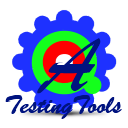Main menu
Tool Scope
Testing Methods
Testing Objectives
- API-testing
- Application-Life-Cycle-Tracking
- Application-Logic-Testing
- Back-End-Service
- Back-end-Stress
- Banking-Process-validation
- Big-Data-Testing
- Binary-Static-Analysis
- Binding-Unit-Testing
- Code-Analysis
- Code-Coverage-testing
- Code-Review
- Code-Tracability
- Coding-Standards-verfication
- Cross-Platform-Testing
- Cross-Browser-testing
- Data-Flow-Analysis
- Data-Interface-Testing
- Data-Migration-Testing
- Data-Warehouse-Testing
- DataBase-testing
- Database-Upgrade-Testing
- Desktop-testing
- EMail-Testing
- Embedded--Software
- ETL-Testing
- Http-Unit-Testing
- Image-Based-Testing
- Image-Comparison
- Interoperability-testing
- Java-testing
- Load-Capabilities
- Log-Tracking
- Memory-Analysis
- Memory-Leak-Detection
- Message-testing
- Metrics-Analysis
- Mobile-Testing
- Network-testing
- Object-Based-Testing
- OWASP-Top10-Testing
- Pair-Wise-Analysis
- Payload-Validation
- Penetration-testing
- Performance-Analysis
- Plugin-testing
- Protocol-Testing
- Runtime-Error-Detection
- SANS-CWE-Top25
- SAP-Testing
- Security-Testing
- SEO
- Server-testing
- SOA-testing
- Static-Code-Analysis
- Stress-Testing
- Test-Cases-Statistics
- Test-Design
- Test-Embedded-systems
- UI-testing
- Uptime-Testing
- WCF-services
- Web-Monitoring
- Web-Services
- Web-testing
- Website-Speed-Testing
You are here
Test Analytics
Test Analytics allows you to efficiently construct an ACC model for your project.
Tool Information
- Log in to post comments
MANUFACTURERS Wallboard
Theme by Danetsoft and Danang Probo Sayekti

